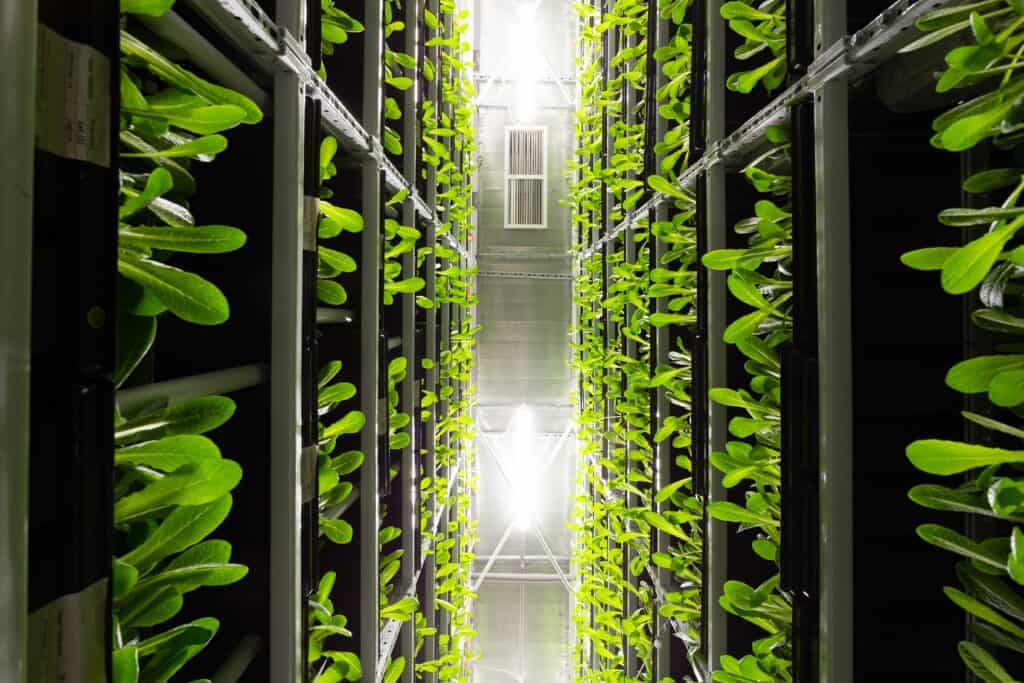Summary
As many communities around the country struggle with food insecurity, hydroponic farming has been introduced as a viable solution.
Many low- and moderate-income (LMI) communities are challenged with a lack of access to grocery stores and local, nutritious food within reasonable proximity. Residents of these communities are left to survive on unhealthier diets. This is a systemic issue disproportionately affecting people of color, who are more likely to live in places shaped by decades of disinvestment and neglect.
“In the 1940s through the 1960s, redlining, racial covenant, and mortgage discrimination led to white flight and decades-long disinvestments in the urban communities where people of color remained,” said Chih-Wei Hsu, a research associate at Inclusive Action in The City, a Los Angeles nonprofit community development organization.
Redlining – the systemic discriminatory practices that walled communities of color out of public and private investment for decades – is often understood as a housing market issue. But its harmful tentacles extend to other corners of economic life as well, including a community’s food resources.
“This results in not only suffering public services but also the grocery companies’ disinterest in building store locations in these neighborhoods and pulling out their existing stores,” Hsu said.
Hunger, public health and housing justice each have large and dedicated groups of policymakers and activists who work hard to make progress in their issue spaces. These three silos can each benefit from collaborating to increase food security in the kinds of communities Hsu described – and by finding creative, high-impact solutions.
One such tool is the hydroponic farm. Hydroponic farming is a practice of indoor farming that can be conducted almost anywhere in the world, including in cities and LMI neighborhoods within them.
A Problem With Deep Roots
Residents of city environments experience systemic food insecurity due to a combination of financial and locational issues. Not only do cities lack space for traditional farming, but residents often live outside of reasonable proximity to a grocery store. Hydroponic farms in cities can give communities power over their own food.
Hydroponic farms are indoor farms that use LED lighting along with mineral and nutrient based water to mimic the necessary elements needed to grow plants. The LED lights act as UV rays and the nutrients and minerals within the water replace the need for soil, allowing the entire process to be conducted indoors. These farms use a vertical planting system, meaning crops are grown on top of each other rather than in horizontal rows seen in traditional farms. This allows for more crops to grow locally in a more concentrated space.
This style of farming has potential to thrive in urban areas year-round. I personally come from Boston, a city environment that entirely lacks a space for farmland. Despite this, I spent three years in high school working on a farm; a hydroponic farm, that is.
Hydroponic farms are able to produce higher yields than traditional farms. The plants receive all nutrients through water, allowing them to spend more time growing upward, rather than extending their roots through soil in search of food. Hydroponic farms use a fraction of the water needed for a traditional farm.
Almost 19 million Americans in low-income communities are more than a mile from their nearest grocery store. Many LMI residents of urban centers have no access to high-quality fresh produce – and what access they do have involves inflated prices and goods shipped in from far away. Locally grown food is more likely to generate positive economic feedback loops in these communities.
Real World Application
I got to see the impact of hydroponic farming up close as a teenager. My high school was able to purchase a hydroponic farm from Freight Farms with funds from a grant, enabling us to grow herbs and vegetables right in the center of Boston throughout all four seasons.
Freight Farms converts shipping containers into hydroponic farms. The shipping container design allows for a high concentration of plants, as well as the ability to build upward rather than outward.
Freight Farms is just one of many companies specializing in vertical and hydroponic farms. Many share the goal of making farming more sustainable in the face of climate change.
Across the country, organizations that specialize in hydroponic farming are aiming to provide fresh produce to individuals and families in low-income communities. A non-profit called Manna House in Huntsville, Alabama, grows produce in a 15,000 square foot hydroponic garden. Their mission is to provide struggling families in the area with healthier food.
Yellow Hammer Farms in Birmingham, Alabama, provides city residents with fresh hydroponic produce grown in their own neighborhood.
Bringing hydroponic farms to cities with the goal of providing low-income residents with healthy food is something cities across the United States could implement to combat food insecurity. Thousands of families feel the detrimental effects of hunger and unhealthy diets every year. As climate change continues to reshape our planet and future, these problems will only worsen. Hydroponic farming has potential to be the future of agriculture, able to provide locally grown food in any area of the world, while using less natural resources to do so.
As my classmates and I learned first-hand, all it takes for a community to take control of its own food future is a bit of financing on the front end to acquire and launch a local hydroponic farming facility. In our case, it took grant funding to make that possible. Lawmakers and other stakeholders working toward solutions to combat lasting systemic oppression of people of color should support such projects by making those start-up funds more widely available. Solutions like these can move us closer to a future that enables people in all communities to thrive.
Kyle Kelley is an intern at NCRC.
Photo by Petr Magera on Unsplash



